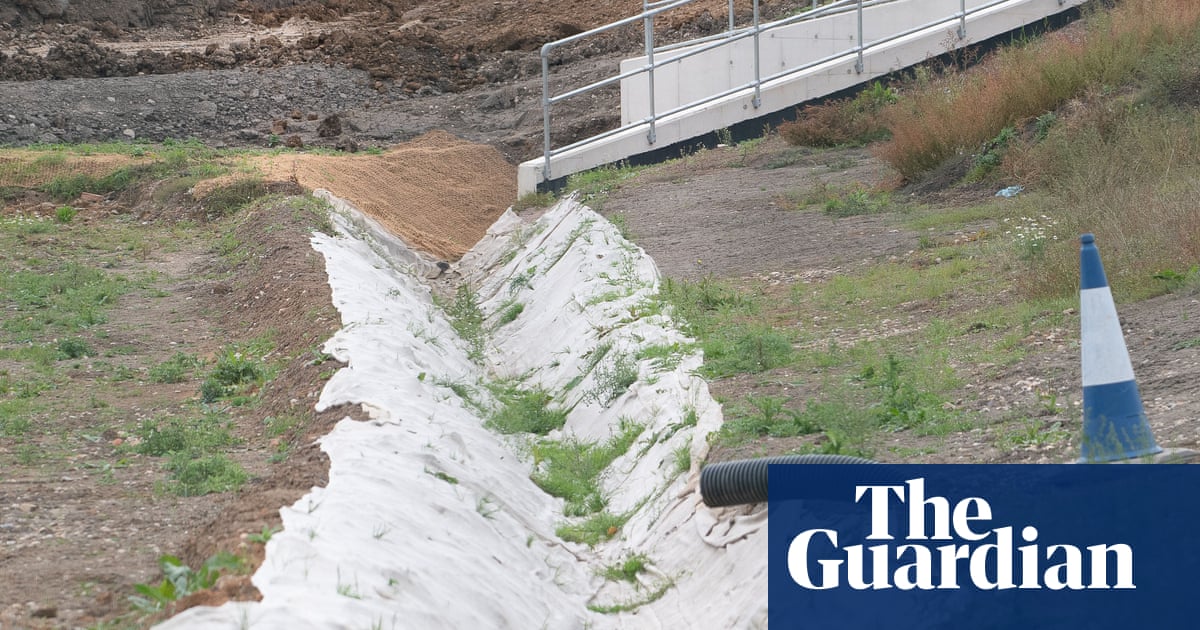
The scrapping of HS2 from Birmingham to Manchester may save 32 ancient woodlands from destruction and reprieve miles of waterways and hedgerows – but the railway’s negative environmental impact may actually intensify with Rishi Sunak’s decision.
The carbon emissions reduction case for HS2 was never favourable – it will be a net contributor to emissions over its 120-year lifespan, according to its own data – but cancelling the new line north of Birmingham weakens the hope that a national high-speed rail network will cut flights between major cities.
And the damage the high-speed line is doing to biodiversity will continue, despite the reprieve for 200 miles of hedgerow and 333 wild ponds on phase 2b (Crewe to Manchester) alone, according to the Wildlife Trusts.
Popular claims that HS2 has already destroyed woods on phases 2a (West Midlands to Crewe) and 2b for a railway that will now never exist are incorrect. Clearance work has not begun in earnest on these sections. “There might have been a bush here or there but nothing at scale,” said a spokesperson for HS2.
But work is continuing on the spur north of Birmingham to link high-speed trains to the west coast mainline close to Lichfield in Staffordshire.
Trees have been cut down in at least one ancient wood for an HS2 construction compound, and other ancient woodlands – which have had continuous tree cover for more than 400 years – will be partly destroyed by this northern end of phase one.
“To us, it’s significant,” said David Cadman, head of nature recovery networks at Staffordshire Wildlife Trust. “That area around Lichfield is a stronghold for ancient woodland in the county and the route manages to hit quite a few of those woods.”
The escalating costs of what is left of HS2 are sometimes attributed to extravagant environmental mitigation, but conservationists who have worked with the high-speed project on the 140-mile London to West Midlands route argue that its environmental aspirations should be much higher.
In HS2’s defence, since it first mapped ancient woodlands under threat by phase one in 2017, it has reduced the woodlands destroyed from 29 hectares to 20.6 hectares. It has directly damaged 25 ancient woodlands, compared with 32 originally forecast (although two of these were woodlands that were reclassified as not ancient). That is a tiny fraction of England’s 52,000 ancient woodland sites.
Conservationists define ancient woodland as irreplaceable but HS2 has translocated soils from ancient woodlands to new land to speed up the regeneration of flora, and bluebells – an ancient woodland indicator – have flowered on translocated soils beside South Cubbington wood, an ancient woodland in Warwickshire bisected by phase one.
High-profile “rewilding” projects by the railway look good on paper and HS2 is creating about eight times the area of ancient woodland destroyed in new woodland, according to the Woodland Trust. But the trust has argued a more acceptable ratio would be 30:1.
Since HS2 made a commitment to “no net loss” of biodiversity, the government has introduced “biodiversity net gain” for housing developments – making the idea that developments should be “nature positive” part of government policy.
A Wildlife Trusts analysis this year concluded that HS2 miscalculated its “no net loss”, undervaluing what nature is affected by phase one – failing to map important watercourses, hedgerows and trees, and overvaluing new compensatory habitats. Phase one, according to the trusts, will cause 7.9 times more nature loss than accounted for by HS2.
On top of potentially flawed environmental calculations, the mitigation measures on the ground have often turned out to be ineffective or not as promised, according to many landowners and conservation charities who have worked with HS2.
Newly planted trees have not been watered and have died, trees have been planted at the wrong time of year, cardboard tree guards have failed to protect newly planted trees from being eaten by deer, and expensive ponds for great-crested newts have dried up.
HS2 has fixed the tree-guards problem and an HS2 spokesperson criticised the Wildlife Trusts’ report as “unreliable” and said its methodology for calculating no net loss had been “rigorously assessed” by professional ecologists.
The spokesperson said: “As well as delivering the country’s largest environmental programme, planting 7m trees and creating over 33km/sq of new habitats on phase one, we continue to minimise loss through design refinements, such as our recent 30% reduction of the impact on ancient woodlands on phase one.”
At Calvert Jubilee, where a Berks, Bucks and Oxon Wildlife Trust (BBOWT) nature reserve has been partially destroyed by the new line, HS2 promised it would move the eggs of rare brown hairstreak and other hairstreak butterflies, which are found on bare branches in winter, to new habitat.
When BBOWT asked for the results of this translocation, contractors had no record of it ever having taken place.
“We don’t think the mitigation is adequate on paper. It’s even more concerning that where they have got mitigation plans in place, we have no idea if they are following them and the contractors have no idea if it’s happening,” said Matthew Stanton, head of planning, policy and advocacy at BBOWT. “HS2 can set all the ambitions it wants but if that doesn’t filter down to the people on the ground, that means nothing.”
At Jones Hill Wood, an ancient wood partly destroyed by the line, a campaigner with relevant qualifications observing the mitigation work reported that translocated soil was moved at the wrong time of year, a translocated hedge was moved in inappropriate weather and almost completely died, while other trees were planted in summer and also failed.
HS2 said it could not comment on the translocation but that replanting dead saplings – as required at Jones Hill Wood – is an anticipated part of its contractors’ ongoing management.
In Warwickshire, the line has destroyed 17 important sites for nature conservation. Ian Jelley, director of landscape recovery at Warwickshire Wildlife Trust (WWT), said it had been “challenging” working with HS2 with its layers of subcontractors, constantly changing staff and reluctance to share ecological data, even when WWT has offered the project its own wildlife data. He said there remained questions over who would manage HS2’s wildlife mitigation land.
According to Jelley, HS2 has been a missed opportunity to create a green corridor running through Britain that could reconnect fragmented nature-rich spaces.
“HS2 had a real opportunity to be part of that solution – a linear feature running most of the length of the country could’ve provided a green corridor for species to move through. HS2 can do better and there’s still time for them to do better.”
Stanton added: “It looks like it’s a white elephant of a project that has cost a huge amount to nature south of Birmingham and is delivering so little to people.”












